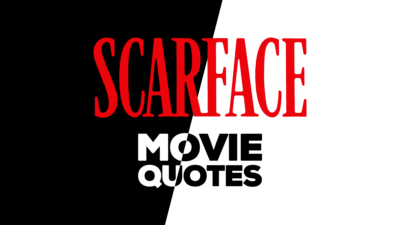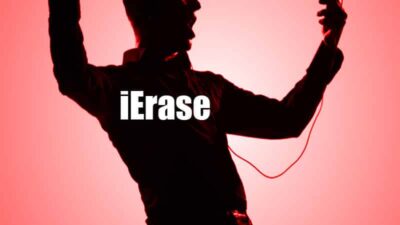Depending on your age, you might (or might not) remember something called “Fan Clubs.” Before the Internet, people paid annual membership fees to clubs and in return got special newsletters, discounts and even free gifts from time to time. There were fan clubs for almost every type of fandom including sports teams, pop stars, swimsuit models, bands, TV shows, hobbies, and popular toys to name a few. Personally I’ve been a member of fan clubs for Pearl Jam, Queensryche, Model Car of the Month, Beer of the Month, Ovaltine, Sweet Pickles and to be completely honest here, I was even a member of the Samantha Fox fan club for a couple of years.
My favorite Samantha Fox song, “Nothing’s Gonna Stop Me Now”.
Fan Clubs Gave Us Bragging Rights
We joined fan clubs because they made us feel special, especially at a young age. They brought us closer to brands, activities, and people that we were passionate about. That postcard from Donald Duck, Yoda, Samantha Fox or Michael Knight had our name on it and gave us bragging rights at school. And good fan clubs, like Pearl Jam’s Ten Club, gave fans exclusives like access to premium concert seating and free records.

I remember getting a Pearl Jam fan club record called “Let Me Sleep” and bringing it to high school. People were cutting class just to see it and none of us even owned a record player.
You’ve Got Mail… In a Few Months
But because fan clubs relied heavily on the US Postal Service and the printing process, communications between fans and the fan club administrators were spotty at best. Fan club newsletters were usually monthly, delivered via snail mail and didn’t provide much opportunity for fans to respond or contribute to the club. Sure you could mail a letter to the fan club, but would anyone read it? Respond? Would Yoda ever read my letter telling him that Santa brought me green and brown Yoda Underoos for Christmas? If he did, he never responded.

Digital Technology Gives Fans A Bigger Voice
But as clubs started to adopt digital communication tools like email and web sites, fans finally got to have a voice in their own community. Content could be delivered to fans more frequently, the fan experience could include interactive web pages and fans could even directly communicate with other fans if the site had a forum or chat room.
The introduction of Blogs in the early 2000s made fandom even easier. Fan club administrators didn’t have to rely on website designers to update pages and format email newsletters anymore. Blogs were easy to write and could include images, audio, and videos unlike forums and chat rooms. Blogs basically allowed anyone to be content creators. Some brands even started allowing fans to write blog posts. And the best part? Fans could react to this new frequent stream of content by simply writing blog comments.
Social Media And Real-Time Conversations Between Fans and Brands
But social media changed everything. Mass communication with a niche community, or even the entire planet, is now direct, easy and instant. Where a monthly printed newsletter might take weeks for fan club administrators to produce and distribute, a single tweet composed by Lady Gaga from her phone after her sold-out performance at Madison Square Garden has the power to instantly reach millions. Everyone from brands to the media is studying her social media success.

And social media is a two-way street. Of course, messages can be broadcast to a large audience. But the ability for fans to engage with celebrities and brands has never been easier thanks to social media. Instead of writing and mailing a letter to an anonymous fan club PO Box, fans can now use services like Twitter to Tweet directly and publicly with personalities.
Fans can also engage in conversations with other fans all over the world and give fan-created content a virtual thumbs up by “Liking” it or re-sharing it. The voice of the fan has never been louder or more influential. And some major brands like Coca-Cola are embracing this power. Coca-Cola is leveraging the power of social media to let their Facebook fans manage, moderate and produce content for their own community. Coca-Cola still participates in online fan conversations and community content creation, but their Facebook page allows any fan to post something on their wall. The community even moderates fan content. Inappropriate messages are flagged by the community. Not only does Social Media enable brands to instantly communicate with their communities, but it also allows brands to give an equal voice to that community.
Social Media And Fandom – The Layers Of Communication Are Now Gone
Social Media has changed fandom forever. It has brought fans both closer to celebrities and brands, as well as each other. The multiple layers of communication are gone. The “fan club managers” who were hired by a PR company, which was hired by a record company, who only communicated with the band through their manager, can all be eliminated with Social Media. Many personalities, like Lady Gaga, have assumed the role of Community Manager and use social media to communicate and have conversations directly with their fans, and in their own voice. Seems like we’ve come a long way since decoder rings and Ovaltine.
Related Articles:
- Doctor Who Fans Go Wild At Doctor Who Season 6 Premiere
- Star Wars Fans Create a Choreographed R2-D2 Chorus Line
- Fans Recreate Iceland Dance Party Viral Video
- Heavy D’s Last Tweet Before His Death Encourages Fans To Find Inspiration

Frank Wilson is a retired teacher with over 30 years of combined experience in the education, small business technology, and real estate business. He now blogs as a hobby and spends most days tinkering with old computers. Wilson is passionate about tech, enjoys fishing, and loves drinking beer.






















 25 Unfortunate But Very Funny Sign Fails
25 Unfortunate But Very Funny Sign Fails
Leave a Reply